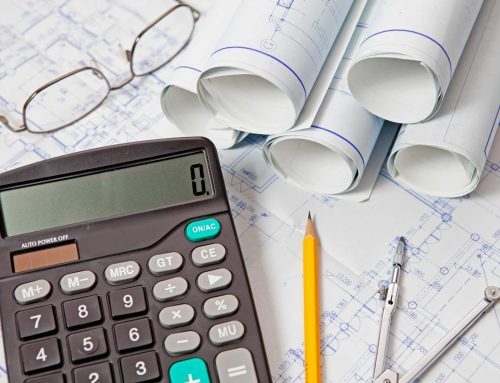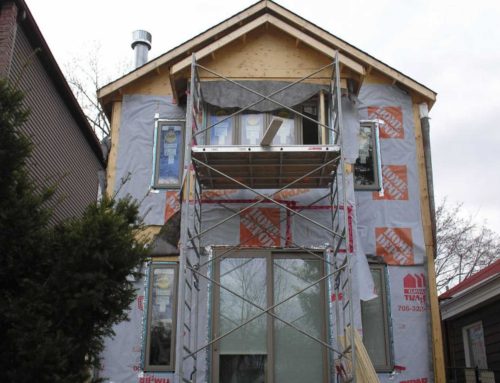There comes a moment for many homeowners when they look at their home’s exterior and notice it’s beginning to look tired. The colour may be faded, the material might be cracked or damaged, and it becomes clear that an upgrade is needed. This realization is similar to noticing wear on a roof. Just as updating your roofing strengthens the top layer of protection for your home, replacing your siding provides the same durability and performance for your walls—completing your home’s weatherproof envelope and boosting its curb appeal. A siding project is a significant investment that can completely transform a home’s appearance and performance. To ensure a smooth and successful outcome, it is essential to understand the process from start to finish. This guide will walk you through everything you need to know before you begin.
Choosing the Right Siding Material for Your Home
The first and most important decision in any siding project is choosing the right materials. The market offers several excellent options. Each has its own balance of cost, durability, and maintenance. Vinyl siding remains the most popular choice. It is affordable, low-maintenance, and comes in a vast array of colours. Modern, high-quality vinyl is formulated to resist fading and withstand harsh weather. Fibre cement offers a step up in durability. This composite material is highly resistant to fire, insects, and rot. It can be made to mimic the look of natural wood or stucco and holds paint exceptionally well for long-lasting colour.
For a more traditional or rustic aesthetic, wood siding provides a classic, natural beauty. This look is unmatched. However, wood requires the most ongoing maintenance. This includes regular staining or painting to protect it from the elements. Metal siding, like aluminum or steel, offers extreme durability and a long lifespan. It also provides a sleek, modern look. The best material for a home depends on its architectural style and the local climate. The homeowner’s budget and maintenance preferences are also key factors. For example, the clean lines of metal suit a contemporary home. The warmth of wood is perfect for a craftsman-style property.
Understanding the Project Timeline from Start to Finish
A professional siding project follows a clear and organized timeline. The process starts with an initial consultation to discuss goals, materials, and design options. This is followed by the delivery of a detailed, written quote. Once a contract is signed, the preparation phase begins. The installation crew prepares the area around the home. They protect landscaping with tarps and remove exterior fixtures like lights and house numbers. Finally, they set up the necessary equipment and scaffolding. This initial phase keeps the property protected and makes the work site safe and efficient.
The installation phase starts with the careful removal and disposal of the old siding. This is a critical step. It reveals the condition of the sheathing or wall structure underneath. At this stage, installers discover any hidden water damage or rot. They must repair these issues before continuing. Once the substrate is sound, the crew installs a new weather-resistant barrier (house wrap). Next, they install the new siding and trim. The final step is a thorough cleanup of the entire work site. For an average-sized home, a typical siding project can take one to two weeks. This timeline can vary based on the material, the home’s architectural complexity, and, of course, the weather.
Budgeting Realistically for Your Siding Replacement
A realistic budget is the foundation of a stress-free renovation. The final cost of a siding replacement depends on three main factors. These are materials, labour, and preparation/trim details. Materials represent the largest variable. Vinyl is the most affordable option. Materials like premium wood or metal are at the higher end of the price spectrum. Labour costs are determined by the size and architectural complexity of the home. A multi-storey house with numerous gables, dormers, and angles requires more time and skill than a simple, single-storey bungalow. The labour cost will reflect that.
When planning a budget, get at least three detailed quotes from reputable companies to establish a clear market rate. Also, set aside a contingency fund of an extra 10-15% of the total budget to cover any unexpected repairs needed after the old siding comes off. Homeowners can find savings by bundling projects. For example, scheduling a siding replacement at the same time as a roofing or window installation often leads to overall savings on labour and setup costs. These are considered perfect exterior project pairings as they address the entire building envelope at once.
The Importance of Professional Installation
The quality of the installation is just as important as the quality of the siding. A professional installer handles every detail correctly. This ensures a beautiful and long-lasting result. Proper installation includes a weather-resistant barrier to protect the home’s structure. It also involves precise sealing and flashing around windows and doors to prevent drafts and leaks. The correct alignment and fastening of the siding panels are also key. Siding materials expand and contract with temperature changes. A professional fastens them securely but with enough room to move naturally. This prevents buckling or warping over time.
A home’s exterior is a complete protective system. The siding and roofing must work together seamlessly. A professional installation guarantees these two systems are properly integrated. This is especially true at the rooflines and eaves, with correct flashing and trim. This process creates a complete, weatherproof envelope. It protects the entire home from the top down. A poorly installed siding job will inevitably lead to problems. Issues like water intrusion, energy loss, and a shortened lifespan can occur, no matter how good the material. This turns a valuable investment into a costly liability.
What to Expect After Installation
Once the installation is complete, a reputable contractor will conduct a final walk-through with the homeowner to inspect the work and ensure complete satisfaction. This is the time to ask any final questions and confirm that the cleanup meets expectations. Following this, the homeowner should receive all the necessary documentation, which typically includes the final invoice, the manufacturer’s warranty on the siding product itself, and the installer’s warranty on the workmanship. These documents are important records of the investment and should be kept in a safe place.
Long-term care is essential for protecting the investment in new siding. Fortunately, most modern siding materials are very low-maintenance. Vinyl, fibre cement, and metal siding typically require only a gentle cleaning with soap and water once a year to remove dirt and keep them looking new. It is also a good practice to conduct a quick visual inspection each season to check for any issues and to ensure the siding is kept clear of debris or overgrown landscaping. This minimal effort will help the siding maintain its beauty and protective qualities for its entire lifespan, proving that investing in high-quality siding pays off for years to come.
Wrapping It Up: Your Home’s New Look
A successful siding project depends on three key pillars: choosing the right materials for the home and climate, planning a realistic budget that includes a contingency, and, most importantly, hiring skilled professionals to do the work. When done correctly, a siding replacement is a powerful investment that can completely transform a home’s appearance, improve its energy efficiency, and protect it from the elements for decades. It is a rewarding renovation that adds lasting value and provides immense pride of ownership every time you pull into the driveway.






